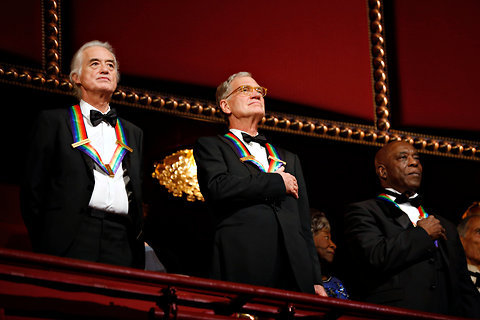The Breakfast Meeting
What’s making news in media.
“Downton Abbey” began it third season on PBS by drawing nearly 8 million viewers to local public broadcasting stations. As Brian Stelter reports, preliminary ratings suggest that the show catapulted PBS into the same league as commercial broadcasters like ABC and NBC — at least for a night. With 7.9 million viewers, the premiere on Sunday night “quadrupled the average PBS primetime rating” and exceeded the average rating of the second season premiere by 96 percent, according to PBS and member station WGBH. While “Downton Abbey” was on, PBS outrated Fox, ABC and NBC, according preliminary Nielsen ratings. (CBS still ranked No. 1 for the night with episodes of “The Good Wife” and “The Mentalist” that had 10 and 10.7 million viewers, respectively.)
The music of Led Zeppelin may be coming to an online streaming service soon. Ben Sisario reports that the band is in negotiations with a number of subscription services for the right to stream “Whole Lotta Love,” “Stairway to Heaven” and the rest of the band’s classic catalog. If it does reach a deal, the band — one of the biggest-selling acts in history — could help legitimize the subscription market, which has been slow to build a large customer base. Among the companies in potential competition for the exclusive rights are Spotify, Rhapsody and Rdio, along with Deezer, which began in France and is interested in the American market. Depending on which service gets the deal, the band’s presence could tip the competitive scales between them, putting a leader like Spotify far ahead or giving a needed boost to a smaller company like Rdio.
The canceled ABC soap operas “All My Children” and “One Life to Live” are being given a new lease on life by Prospect Park, a Hollywood production company. Brooks Barnes reports that the company, run by Jeff Kwatinetz, will resume production on the serial dramas in February. Prospect Park has solved the union and financing problems that torpedoed the soap-saving effort after it was first announced last fall. The company on Monday confirmed that new agreements are in place with the major actors’ union, SAG-AFTRA, and with the Directors Guild of America. The “necessary financing” is also set, as is the involvement of Agnes Nixon, the creator of both soaps. The Online Network also named three other senior executives. “All My Children” last aired in September 2011; the last airing of “One Life to Live” came in January 2012.
A new advertising campaign for the Crohn’s and Colitis Foundation of America features print and television ads designed to increase awareness of the debilitating ailments. The pro bono effort is by the New York office of DraftFCB, part of the Interpublic Group of Companies. Print ads encourage readers to learn more about Crohn’s disease by visiting a microsite, EscapeTheStall.com. In a commercial for the campaign, the viewer hears, “Chances are you know someone with I.B.D.” The voice turns out to be that of the actress Amy Brenneman(“Judging Amy” and “Private Practice”), who says near the end of the spot, “Someone like me.” As Andrew Adam Newman reports, the organization hopes that the public service announcement will run widely on television and in movie theaters. Other elements for the campaign include billboards and ads online and in airports. Ads printed on transparent adhesive film will even appear on mirrors in public restrooms.

